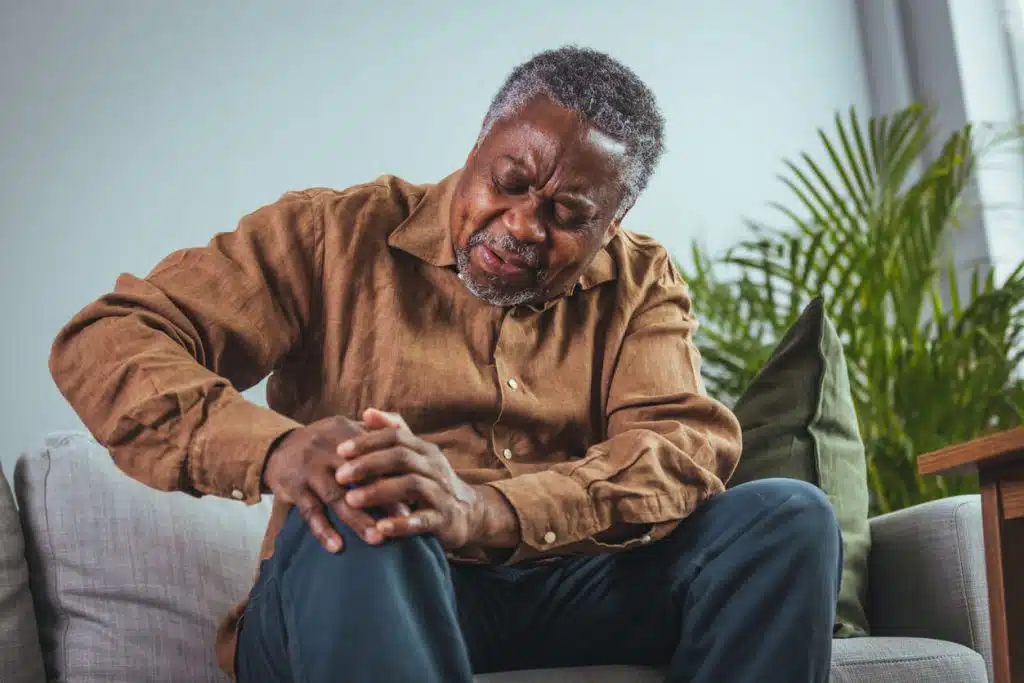
Joint pain is the discomfort, aching, or pain in one or more joints in the body. This discomfort can affect the quality of one’s everyday life, making joint pain relief a high priority.
Understanding Joint Pain
Joint pain is a multifaceted condition that can stem from various causes, including:
- Arthritis
- Injury
- Repetitive use
- Underlying health issues
Its impact on life can range from mild inconvenience to severe impairment, influencing not just physical well-being but also emotional health.
Recognizing the complexity of joint pain is the first step toward addressing it.
Our team combines authoritative knowledge with a warm, patient-centered approach, ensuring you receive care tailored to your unique situation.
Based on your diagnosis, medical history, goals, and condition, your orthopedic specialist will craft a treatment plan that may include the following:
Physical Therapy
Physical therapy stands as a cornerstone of joint pain management, offering a blend of targeted exercises and manual therapy techniques designed to:
- Strengthen muscles
- Enhance flexibility
- Reduce pain
Our physical therapists work closely with you, crafting a regimen that respects your body’s limits while gently pushing toward improvement.
Injection Therapies
Injection therapies, including corticosteroids and hyaluronic acid, offer direct relief to inflamed joints, buffering pain and facilitating smoother movement.
These treatments, administered with precision and care, can be pivotal in managing chronic conditions or as part of a broader rehabilitation strategy.
Surgical Interventions
When conservative measures are insufficient, surgical options will be considered.
Below are standard surgical procedures that have emerged as treatments for many facing the challenges of joint deterioration and pain.
1. Arthroscopy
Arthroscopic surgery is defined by its minimally invasive nature, allowing for detailed examination and treatment of joint issues with minimal disruption.
A surgeon inserts a camera and specialized instruments through small incisions, making this procedure a preferred option for addressing orthopedic issues with precision and reduced recovery times.
These injuries and conditions include:
- Meniscal tears
- Loose cartilage
- Other intra-articular conditions
2. Total Joint Replacement (Arthroplasty)
Arthroplasty represents a transformational approach to severe joint pain and dysfunction, particularly in the hips and knees—areas most commonly affected.
This procedure involves replacing damaged joint components with artificial implants, offering patients a new lease on mobility and significantly reducing pain.
Prosthetic design and materials advancements have enhanced these replacements’ longevity and success rates.
3. Joint Resurfacing
Joint resurfacing serves as an alternative to total replacement for some patients, mainly:
- Those with localized damage
- Younger individuals seeking to preserve as much of their natural anatomy as possible
By resurfacing the damaged area of the bone and capping it with a metal or ceramic prosthesis, this procedure aims to maintain joint integrity while relieving pain and improving function.
4. Osteotomy
Osteotomy addresses joint pain stemming from misalignment or uneven wear by cutting and repositioning the bone to redistribute weight more evenly across the joint.
Often considered for knee and hip issues, this procedure can delay the need for total joint replacement, offering a significant benefit for younger patients.
5. Synovectomy
For patients suffering from inflammatory arthritis conditions, such as rheumatoid arthritis, a synovectomy offers a targeted approach by removing the inflamed synovium—the lining of the joint.
This procedure aims to reduce pain and swelling, potentially slowing the progression of joint damage.
6. Arthrodesis (Joint Fusion)
In situations where joint replacement is not viable, arthrodesis emerges as an option to alleviate pain by fusing the bones within the joint permanently.
While this procedure limits joint movement, it can significantly enhance stability and comfort, particularly in the ankles and wrists.
Top Orthopedics in Baltimore, MD
We believe that informed patients make empowered decisions, leading to more successful outcomes. Throughout your treatment, we provide clear, accessible information, shedding light on complex medical concepts and encouraging questions. This educational partnership enhances both your understanding and your ability to actively participate in your care.
If you are navigating the challenges of joint pain, we invite you to discover the compassionate, expert orthopedics in Baltimore awaiting you at Orthopaedic Associates of Central Maryland. Here, we blend scholarly insight with a heartfelt commitment to patient well-being, guiding you toward relief. Call our helpful staff today at (410) 644-1880 or toll-free at (855) 4MD-BONE or use this link to schedule an appointment.
Together, we can embark on a path to improved mobility, comfort, and quality of life.

